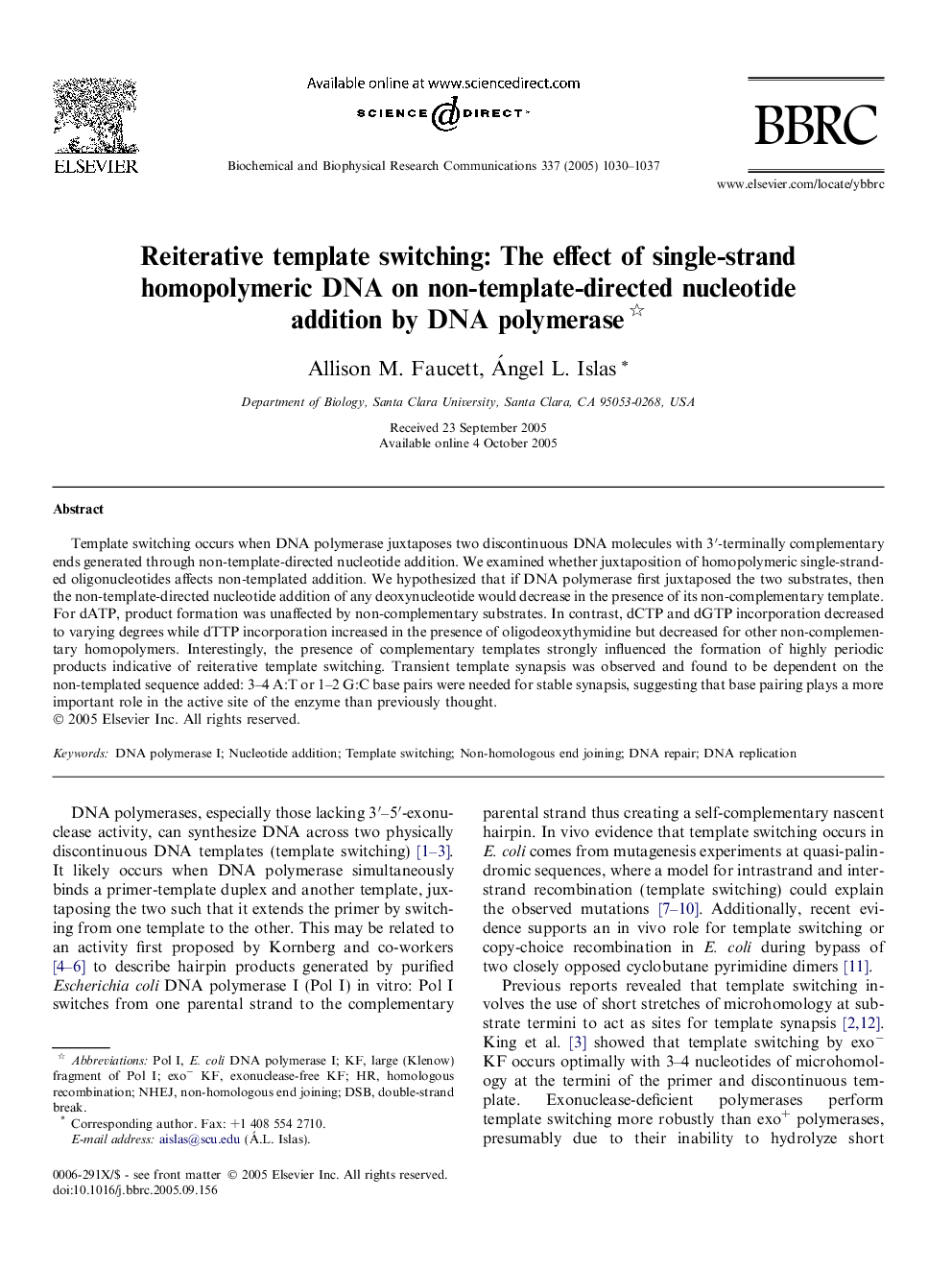| Article ID | Journal | Published Year | Pages | File Type |
|---|---|---|---|---|
| 10769084 | Biochemical and Biophysical Research Communications | 2005 | 8 Pages |
Abstract
Template switching occurs when DNA polymerase juxtaposes two discontinuous DNA molecules with 3â²-terminally complementary ends generated through non-template-directed nucleotide addition. We examined whether juxtaposition of homopolymeric single-stranded oligonucleotides affects non-templated addition. We hypothesized that if DNA polymerase first juxtaposed the two substrates, then the non-template-directed nucleotide addition of any deoxynucleotide would decrease in the presence of its non-complementary template. For dATP, product formation was unaffected by non-complementary substrates. In contrast, dCTP and dGTP incorporation decreased to varying degrees while dTTP incorporation increased in the presence of oligodeoxythymidine but decreased for other non-complementary homopolymers. Interestingly, the presence of complementary templates strongly influenced the formation of highly periodic products indicative of reiterative template switching. Transient template synapsis was observed and found to be dependent on the non-templated sequence added: 3-4 A:T or 1-2 G:C base pairs were needed for stable synapsis, suggesting that base pairing plays a more important role in the active site of the enzyme than previously thought.
Related Topics
Life Sciences
Biochemistry, Genetics and Molecular Biology
Biochemistry
Authors
Allison M. Faucett, Ángel L. Islas,
